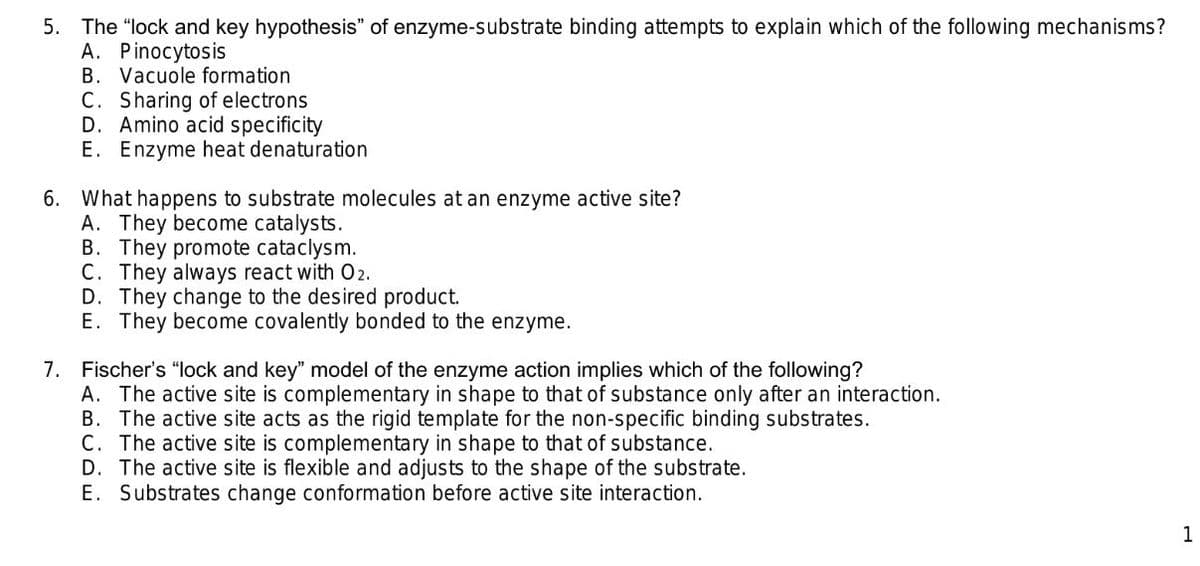5. The "lock and key hypothesis" of enzyme-substrate binding attempts to explain which of the following mechanisms? A. Pinocytosis B. Vacuole formation C. Sharing of electrons D. Amino acid specificity E. Enzyme heat denaturation
5. The "lock and key hypothesis" of enzyme-substrate binding attempts to explain which of the following mechanisms? A. Pinocytosis B. Vacuole formation C. Sharing of electrons D. Amino acid specificity E. Enzyme heat denaturation
Biology: The Dynamic Science (MindTap Course List)
4th Edition
ISBN:9781305389892
Author:Peter J. Russell, Paul E. Hertz, Beverly McMillan
Publisher:Peter J. Russell, Paul E. Hertz, Beverly McMillan
Chapter6: Energy, Enzymes, And Biological Reactions
Section: Chapter Questions
Problem 6TYK: Which of the following methods is not used by enzymes to increase the rate of reactions? a. covalent...
Related questions
Question
2

Transcribed Image Text:5. The "lock and key hypothesis" of enzyme-substrate binding attempts to explain which of the following mechanisms?
A. Pinocytosis
B. Vacuole formation
C. Sharing of electrons
D. Amino acid specificity
E. Enzyme heat denaturation
6. What happens to substrate molecules at an enzyme active site?
A. They become catalysts.
B. They promote cataclysm.
C. They always react with 02.
D. They change to the desired product.
E. They become covalently bonded to the enzyme.
7.
Fischer's "lock and key" model of the enzyme action implies which of the following?
A. The active site is complementary in shape to that of substance only after an interaction.
B. The active site acts as the rigid template for the non-specific binding substrates.
C. The active site is complementary in shape to that of substance.
D. The active site is flexible and adjusts to the shape of the substrate.
E. Substrates change conformation before active site interaction.
1
Expert Solution
This question has been solved!
Explore an expertly crafted, step-by-step solution for a thorough understanding of key concepts.
Step by step
Solved in 3 steps

Recommended textbooks for you

Biology: The Dynamic Science (MindTap Course List)
Biology
ISBN:
9781305389892
Author:
Peter J. Russell, Paul E. Hertz, Beverly McMillan
Publisher:
Cengage Learning

Biology: The Dynamic Science (MindTap Course List)
Biology
ISBN:
9781305389892
Author:
Peter J. Russell, Paul E. Hertz, Beverly McMillan
Publisher:
Cengage Learning